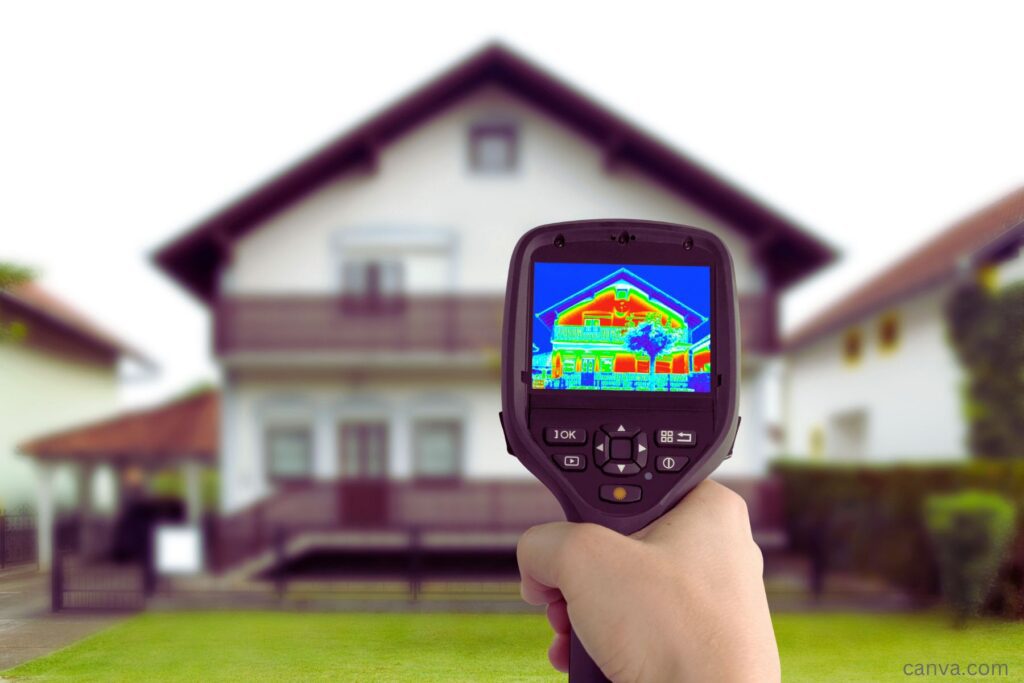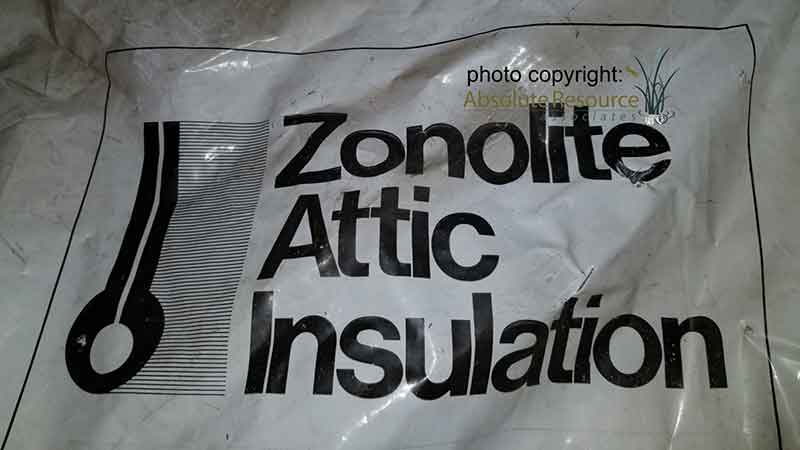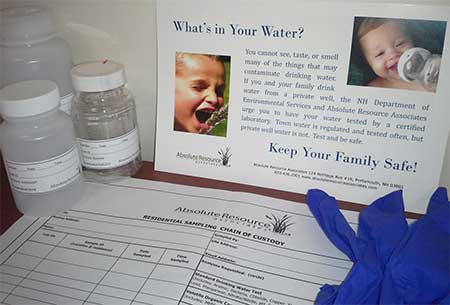5 Hidden Dangers to be Aware of Before Purchasing a Home
October, 2021 – You’re so ready and excited to buy a home. You’ve made the list of must haves: 3 bedrooms, large kitchen, 2 bathrooms, yard for kids and pets to run, good school system, and close to work. You’re pre-approved, you know your budget, your Real Estate Agent is a rock star and knows the market. You find a home, you love it, and you make an offer.
Just as you start thinking about appliances and paint colors, you lose the house to someone who offers to buy sight unseen and waives the home inspection. How do you compete with that?

Unfortunately, this story is becoming more and more common in the current Real Estate Market. There are legal, financial, health, and safety related implications involved with waiving a home inspection. It’s a regrettable trend that experts warn can have very serious consequences.
Chris Ross of North Coast Home Inspections says it’s like making the biggest investment of your life with a blindfold on. “We recently did a Post Closing Inspection and uncovered over $8,000 worth of systems and building repairs needed. Unfortunately, this scenario is not uncommon.”
Why You Need to Look Beyond the Disclosure
Most states have Seller Disclosure Requirements, ensuring that anything negatively affecting the value of the property is revealed in writing before the sale, and environmental hazards such as lead paint and asbestos are often included in that checklist. But there are cases in which a hazard is first discovered during the home inspection and environmental testing phase. Waiving the inspections because of market pressure is risky business.

Whether to pay for a professional home inspection and perform additional environmental testing is ultimately up to the buyer of the property. In a hot housing market, home inspectors may be difficult to schedule, and additional tests may delay the sale or even make it fall through. But a reputable Real Estate agent would never advise you to skip this step, because as the saying goes, buyer beware.
Environmental Hazards Can Hide
Some environmental hazards can be very harmful to human health. Radon at unsafe levels can be found in 1 in 15 homes in the US. Mold, left unaddressed, can also cause property damage and structural problems. Asbestos, Lead, and Contaminated Water are very common in homes built before 1978.
Knowing about, and knowing the extent of, an environmental hazard up front allows you to research the cost to fix the issue, try to negotiate a better deal, or walk away. Whether you’re buying or selling a home, addressing these issues before closing is in the best interest of all.
Let’s Take a Closer Look at 5 Potential Hazards When Purchasing a Home
Mold
Visible mold and signs of water damage will be noted by the Home Inspector during their assessment of the home. If visible mold is found in a small, contained area, a thorough cleaning may be all that is needed, but if the mold is widespread, the Home Inspector will likely suggest you call a Certified Mold Professional.
DIY and Mold Remediation
While it may seem like no big deal, Do it Yourself (DIY) approaches for large areas of mold can be very dangerous, especially to individuals who are immunocompromised or allergic to mold. Hiring a remediation company to clean the visible mold before having the home assessed by a Certified Mold Professional may also be problematic. While it is an added cost, it is considered best practice to first hire a Mold Inspector to perform a full investigation of a home with mold issues.

Believe it or not, hiring a Certified Mold Inspector before remediation can actually save a lot of money and headaches in the long run.
A Mold Inspector investigates the root causes of a mold issue, finds sources of both visible and hidden mold, tests for the type and concentration of molds, and outlines the scope of work for remediation. This process ensures that the mold problem is fixed correctly the first time.
Avoid the Do-Over
Some remediation companies will clean the visible mold, only to have the problem come back. Mold Inspectors are frequently called about failed remediation efforts, often discovering a leaky pipe hidden behind a wall, mold in the air handling units spreading spores back into the living space, mold in an attic that was never inspected, etc. Mold Inspectors are trained in mold sleuthing.
Follow Your Nose
If the inspector didn’t indicate mold on his report, and you don’t SEE any mold, but you definitely SMELL it, you might want to insist on calling in a Certified Mold Professional. Your nose is often the best indicator of a mold issue, and if the mold has been painted over or covered up somehow, a Certified Mold Investigator has the tools and knowledge to investigate and locate the problem, even if it’s hidden.
A Final Note About Mold
Since the mold industry is largely unregulated, anyone can call themselves a mold expert. If you want to be sure you are hiring a reputable firm to help with your mold problem, visit the American Council for Accredited Certification (ACAC) website at www.acac.org. Firms listed in the ACAC database have certified, trained Mold Professionals on staff, including inspectors, remediators and more. Reputable firms, such as those affiliated with ACAC, will be honest about the scope of the problem and your remediation options.
Asbestos
Many homes, especially those built before 1978, contain asbestos (as well as Lead Paint). Contrary to popular belief, asbestos is still being manufactured in parts of the world, and you can still purchase Asbestos Containing Materials (ACM) in many hardware stores in the United States.
Since it is well documented that exposure to asbestos can cause a variety of serious health effects, it’s very important to know where asbestos is commonly found in homes and buildings.

Common Sources of Asbestos:
- Insulation around pipes, boilers, ducts
- Insulation around stoves or furnaces
- Attic & wall insulation
- Floor tiles, vinyl sheets & adhesives
- Roofing, shingles, or siding
- Popcorn ceiling & ceiling tiles
- Textured paint & patching compound
If the home you are buying (or selling) contains known asbestos, it should be indicated on the Sellers Disclosure. If asbestos is not indicated on the disclosure, but you or your agent have reason for concern, you may want to hire a Certified Asbestos Inspector to be safe. Never disturb suspect ACM, and consult the Asbestos Inspector for your safest options and next steps.
If asbestos is confirmed, “DIY” removal, while legal in many cases, is not recommended. If you decide to take the risk and remove the ACM yourself, be sure to follow all protocols and disposal laws related to asbestos to protect the health of you and your loved ones.
Believe it or not, in some cases the best option is to just leave the asbestos alone. Asbestos is most dangerous to humans when the fibers become airborne and enter the lungs. The EPA states that a typical asbestos fiber is 1,200 times smaller than a strand of human hair and can remain in the air for hours after being released from ACM.
However, if the ACM is intact, in a low traffic area, and not showing signs of wear and tear, you may be advised to leave it alone or cover it. A Certified Asbestos Professional should be consulted before making those decisions, and if you do leave the asbestos intact, be sure to document the ACM locations in case you ever sell or renovate the home.
A Final Note About Asbestos
Before asbestos became regulated, the Zonolite brand of vermiculite insulation was used extensively for decades in the US. According to the EPA, if vermiculite insulation is found in a home or building, you should assume it contains asbestos (meaning you don’t have to pay to have it tested to confirm this). If you can prove the Zonolite brand of insulation was used in the home, you may be eligible for a rebate to use toward remediation. The Zonolite & ZAI Trust reimburses 55% of remediation costs (up to $4330) to those who can prove that Zonolite insulation was used.

Lead
If you are buying a home that was built before 1978, you should be aware that in addition to asbestos, the home is likely to contain lead paint. Homes for sale usually have beautiful, flawless paint jobs for showings, but a home built in the 1970s probably has many layers of paint on those walls.
A properly trained Lead Inspector with an Xray Fluorescence Analyzer (XRF) can detect lead in more than two dozen layers of paint.
If lead paint is disclosed or found in the home, any renovation, repair or painting should only be performed by a certified professional in order to prevent lead contamination.
Lead exposure can be harmful to human health, and according to the US Centers for Disease Control and Prevention (CDC), there is NO safe blood level of lead for children.
Another Common Source of Lead
In addition to lead paint, older homes may also have lead pipes, copper pipes with lead solder, and/or unsafe levels of lead in the drinking water.
The seller will likely provide a water quality report and Sellers Disclosure for any lead issues, but you may choose to pay for your own additional testing and inspections, for added peace of mind when buying an older home.
Radon
Radon is a naturally-occurring radioactive gas that is commonly found in bedrock, and according to the EPA, one in 15 homes in the US have unhealthy levels of radon gas. Smokers who live in a home with high radon have an especially high health risk, since smoking and radon are the top 2 causes of lung cancer.
You cannot see, smell or taste radon, and so the only way to know whether a home has a safe level is to have it tested. Many newer homes are being built with “radon-resistant construction features”; be sure to inquire about this when shopping for a home.

It is relatively inexpensive and easy to test a home for radon in the air, and most Home Inspectors will include a Radon Air Test in their fee structure. If the radon level in the home is 4 picocuries per liter (pCi/L) or higher, the EPA advises that you implement radon mitigation in the home. This EPA Radon Guide for homeowners has some great information and tips, and this website has a database of Certified Radon Mitigation Professionals in every state.
A Few Notes About Radon in Water
Homes with private wells should include radon as part of their water testing package. EPA has not set limits for radon in water, noting that the risk from radon in air is much greater. Some states have set their own limits (for example NH has set an “Advisory Level” of 2,000 pCi/L for radon in water) at which point mitigation treatment should be considered. Radon mitigation specialists can advise on treatments for reducing radon levels in both air and water.
Other Water Contaminants
When buying a home, you will likely receive a water quality report from the seller. In most parts of the US, the drinking water that is provided to citizens by a Public Water System (PWS) is regularly monitored and tested for several potential contaminants, per state and federal regulations. However, domestic wells are not regulated by the Safe Drinking Water Act, and most states place the responsibility of maintaining and testing the well water up to the homeowner.

You cannot see, smell, or taste most contaminants in drinking water, so the only way to know if the water is safe for consumption is to have it tested by a certified laboratory.
If you are buying a home with a private well:
- make sure that the seller provides a water quality report.
- confirm that the water testing was performed by an accredited laboratory.
- read the lab results thoroughly.
- if you would like to decipher what the reported analyte levels mean, you can enter the values into this water quality analysis tool from NHDES.
A standard drinking water test typically includes: Arsenic, Bacteria, Chloride, Copper, Fluoride, Hardness, Iron, Lead, Manganese, Nitrate/Nitrite, pH, Radon, Sodium, and Uranium.
You may want to consider further tests particular to the property, considering factors such as proximity to a landfill or hazardous materials site, industrial / manufacturing / farming facilities nearby, water contamination in the local news, etc. For example,
PFAS in drinking water has become a concern in certain parts of the country, and since NH is considered a PFAS “hotspot,” many homebuyers in the state are adding PFAS to their drinking water testing.
Some Notes About Water Testing and Remediation
Most Real Estate contracts allow 10 days for homebuyers to complete the inspections, but be advised that additional Laboratory Testing can take 1-2 weeks, with additional fees for rush orders.
If your lab report comes back with high levels of contaminants, and you are in a position to negotiate, you may consider asking the seller about fronting or sharing the cost of remediation, since home Water Treatment Systems can be quite expensive. If not, at least you know what you’re up against and can decide if the added cost of buying new Water System is a deal breaker. In a tight housing market, you may not have much wiggle room to ask for compensation, but having the information before closing is better than being blindsided down the road.
Sight Unseen? Buyer Beware!
If you are currently shopping for your new home, and have already lost a few bids, you may be feeling desperate. The Real Estate market over the past few years has become crazy competitive. When demand is high and inventory is low, it can be tempting to rush through the process so you don’t find yourself sideswiped by an out of state buyer with cash in hand and an eye on your favorite listing.
Real Estate Agents are doing all they can to help their clients into their new home, but any agent worth their salt would never advise ignoring environmental hazards or skipping a thorough home inspection. Not only is it risky, but they could also potentially be held liable.
Adds Chris Ross of North Coast Home Inspections, “A comprehensive home inspection can identify roofing, structural, plumbing, electrical issues as well as many other problems. Bypassing a Home Inspection could mean unknowingly living with major health and safety hazards.”

Be smart and thorough, because better safe than sorry, as they say. Trust the process, have some patience, and pretty soon you’ll be snapping selfies by the SOLD sign.


